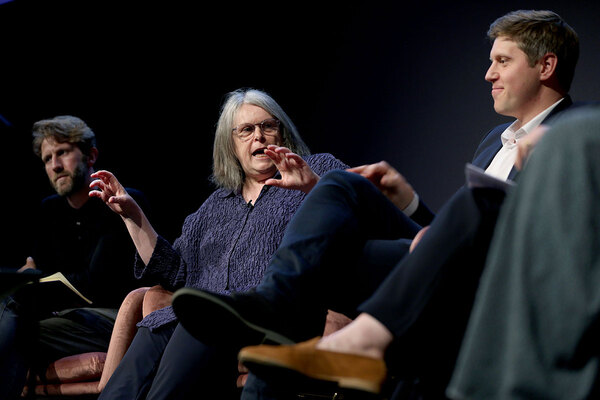You are viewing 1 of your 1 free articles
Promoting gender equality in trades
The sector needs to make a concerted effort to get more women working in maintenance and construction, says Catriona Simons
I was struck recently by how few commercial pilots are women – 6% in the UK. It is incredible that in 2017 there are still professions in which women are so under-represented.
The same is true of the maintenance and construction professions, which are central to our businesses. Research commissioned by Mears’ Women into Maintenance Steering Group, due to be published this summer, suggests that women make up no more than 1% of our trades workforce in the social housing sector (and only between 1% and 2% across all sectors nationally).
Given our sector’s commitment to diversity and inclusion, this is surprising and disappointing. And it is something we have to address – or do more to address – fast.
The moral argument is strong, and doesn’t require much amplification. In the second decade of the 21st century, there must be equality of employment opportunities. There should be no barriers – actual or perceived – to women entering any profession.
“Women make up no more than 1% of our trades workforce in the social housing sector.”
The business case, which is twofold, is also hugely compelling. First, we know that some of our customers would prefer to have repairs in their home carried out by a female tradesperson.
Some for religious reasons, and some because they feel vulnerable in their home, perhaps as a result of domestic abuse. As customer service businesses, we should be able to respond to these very legitimate customer needs.
The case for increasing the resilience of our workforce is similarly persuasive. We have been talking for years about skills shortages in the maintenance and construction industries, a debate which has intensified over the past 12 months with concerns about a skills exodus post-Brexit.
There’s something slightly uncomfortable about an argument that (if we’re not careful) evokes the munitions industry during the First World War, but we should not be overlooking 51% of the population when we think about skills for the future.
So why aren’t we attracting more women into maintenance? The research tells us that occupational gender stereotyping starts in the family, and continues throughout women’s lives – in school, through further education, and into the workplace where it sometimes manifests in discriminatory behaviours.
We have a lot to do to promote opportunities in maintenance to women at every stage of their careers. We need to tackle this gender stereotyping and address preconceptions, among both women and men, about ‘men’s jobs’.
The trades should be seen as a real career option for young women at school, as well as women seeking a career change or returning to work. The training is structured; there are clear entry points, often through apprenticeships; there is career progression; and there is solid earnings potential. In the field of responsive repairs in particular, roles lend themselves to part-time and flexible working.
A male-dominated workplace does not need to be inhospitable provided it’s not geared towards male employees. This is not about accommodating women; it’s about creating workplaces and practices that are suitable for everyone, standardising or differentiating as necessary. Standard manual handling guidelines. Lone working devices for everyone. The right workwear. Suitable toilet and locker facilities. None of this is without precedent in other professions.
The practical considerations are really important, but perhaps only half the challenge. We have no reported cases of women tradespeople being discriminated against or excluded at Guinness, but that doesn’t mean that breaking (what is still) new-ish ground might not be daunting. So we also offer all our female tradespeople a mentor, and we run an employee focus group to enable them to share experiences and so we can identify and address any unforeseen issues.
Our sector is changing the reality for Women in Maintenance, but we need to work harder to reach out and break down these stereotypes and dispel outdated myths.
“This is not about accommodating women; it’s about creating workplaces and practices that are suitable for everyone.”
This means championing today’s female tradespeople as ambassadors who can reach out to young women and promote the trades as a career option. It means educating careers advisors and job centre staff. It means partnering with further education colleges so that women studying for NVQs can get the workplace experience they need to qualify. And it means targeting recruitment, and doing simple things like using images of women tradespeople in our recruitment literature.
A number of housing associations are part of the Women into Maintenance Steering Group, led by Mears, which recently secured Construction Industry Training Board funding to support these types of initiatives. This has enabled two of our tradeswomen at Guinness to train as ambassadors for women in maintenance and they now regularly work with groups of school girls and older women, acting as role models promoting careers in maintenance.
Under the Amy Johnson Flying Initiative, easyJet is aiming for 20% of its new entrant cadet pilots in 2020 to be female. I’d like 20% of our new hires in the trades to be women by then, too.
Catriona Simons, chief executive, Guinness Partnership









